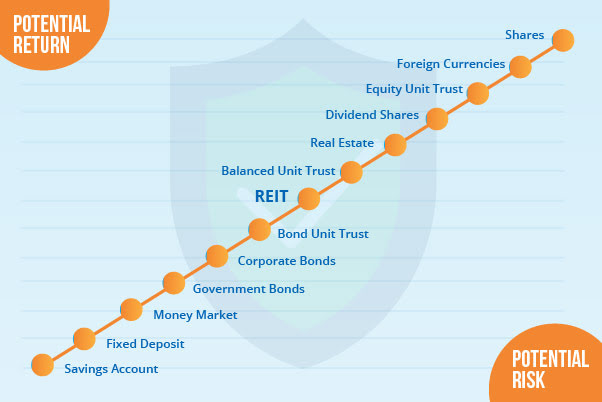
When it comes to successful investing, the smart investor will only consider potential returns after first considering the risks involved. There are many levels of risk. In the lowest spectrum of risk, products such as fixed deposits may give you guaranteed potential low returns, while products such as Futures and Options usually sit at the far end of the spectrum – highly risky, but with the potential of offering higher returns.
The above diagram represents a simplistic view of several common investment products and their risks. In this article however, we are going to take a closer look at the inherent risks involved in unit trust funds:
Lower risk
Money market funds
Money market funds offer lower risk, and also lower returns as these funds invest in low risk money market instruments. However, they do carry the risk of being affected by interest rate changes.
Fixed income funds
Slightly higher up the risk chart are fixed income funds. These funds are usually made up of government securities, corporate bonds, and money market instruments.
Like its name suggests, an income fund aims to provide investors with regular income payments, but with less emphasis on capital growth. Fixed income funds can also help diversify an investment portfolio.
Moderate Risk
Balanced funds
In balanced fund investments, investors are exposed to stocks, but with the risk being mitigated because a portion of the fund will be allocated to debt securities like bonds.
The objective of a balanced fund is to achieve the perfect balance of safety, income and capital appreciation by adopting a general strategy of investing in fixed income and equities. It is typically done by allocating 60% of the investment into equities, with the balance of about 40% remaining in fixed income.
High Risk
Global/International equity funds
Equity funds are generally considered high risk but global or international equity funds mitigate some of this risk because they dive into different markets, which can help mitigate country-specific risks. The main difference between the two? A global fund invests in different countries including your home country, while international funds only invest in other countries.
Equity funds
In theory, equity funds can generate higher returns compared to lower risk investments like fixed income funds, such as government bonds and cash.
However, equity funds are considered riskier or more volatile as they invest almost entirely in an equity market. There are different types of equity funds with different levels of risk, but equity funds should always be seen as risky investments.
Conclusion
When creating your portfolio, always determine the percentages to be allocated to stocks and bonds, which should reflect your tolerance for risk and ability to handle major market downturns. Your portfolio should also include all types of stocks, whether large or small, growth or value, domestic or international, dividend- or non-dividend payers as well as lower risk bonds.
Remember, always choose to allocate more assets in lower risk funds, and less on high risk funds. This will help create a well-balanced portfolio and reduce overall investment risk.
Happy investing!



No comments:
Post a Comment